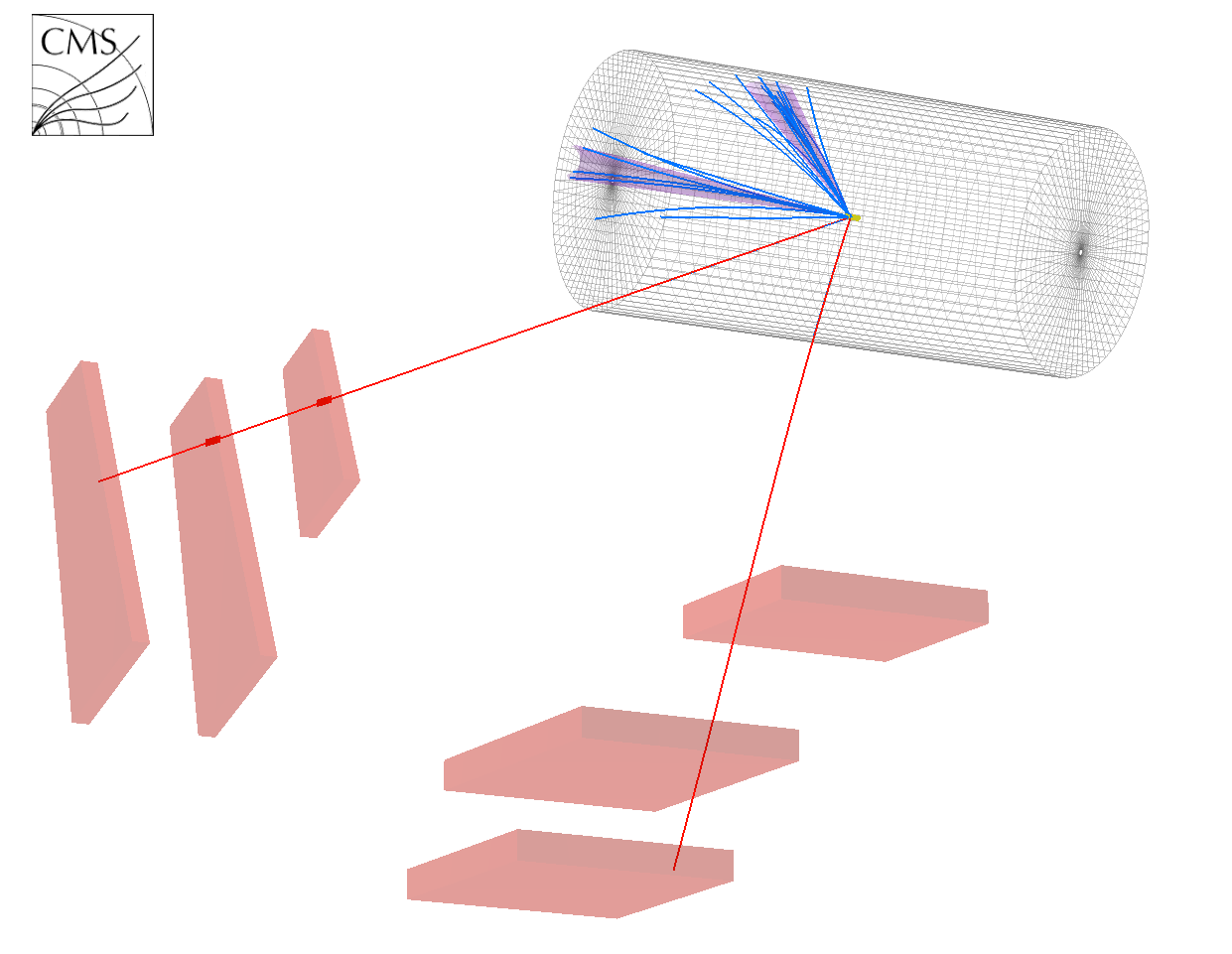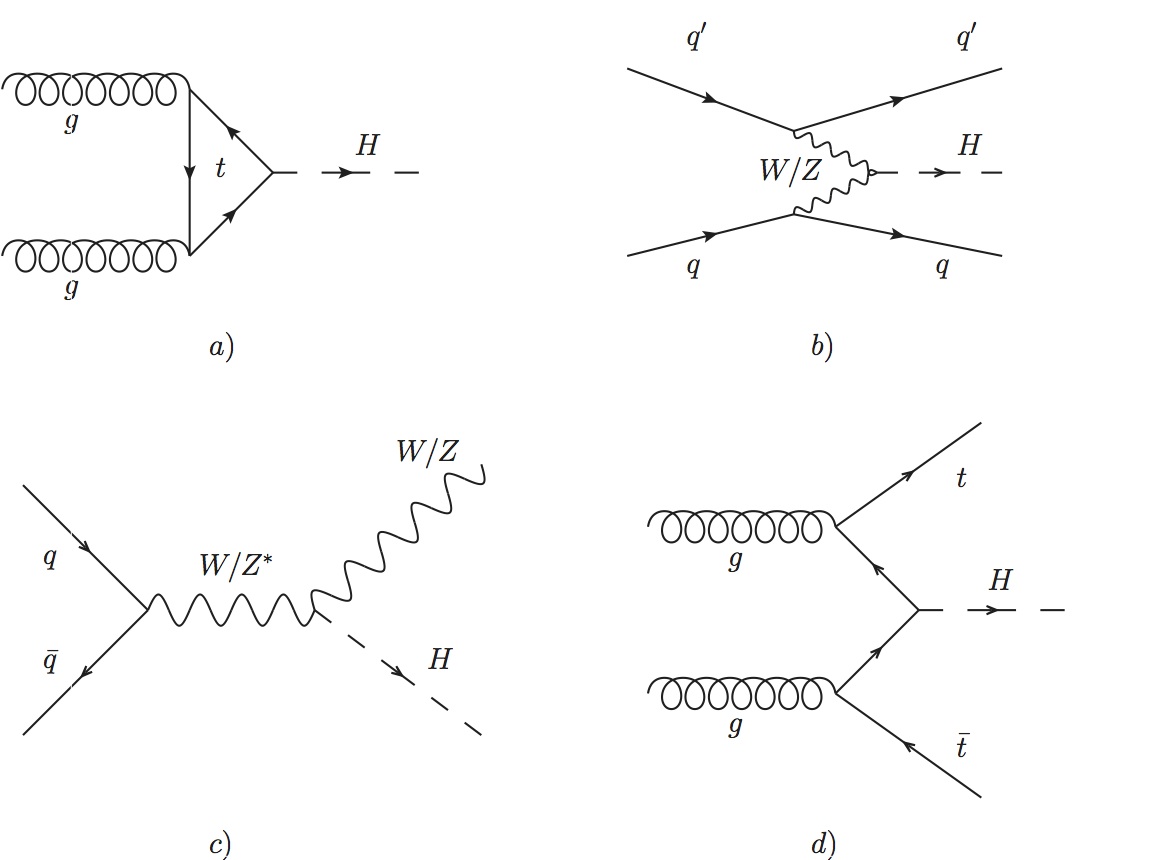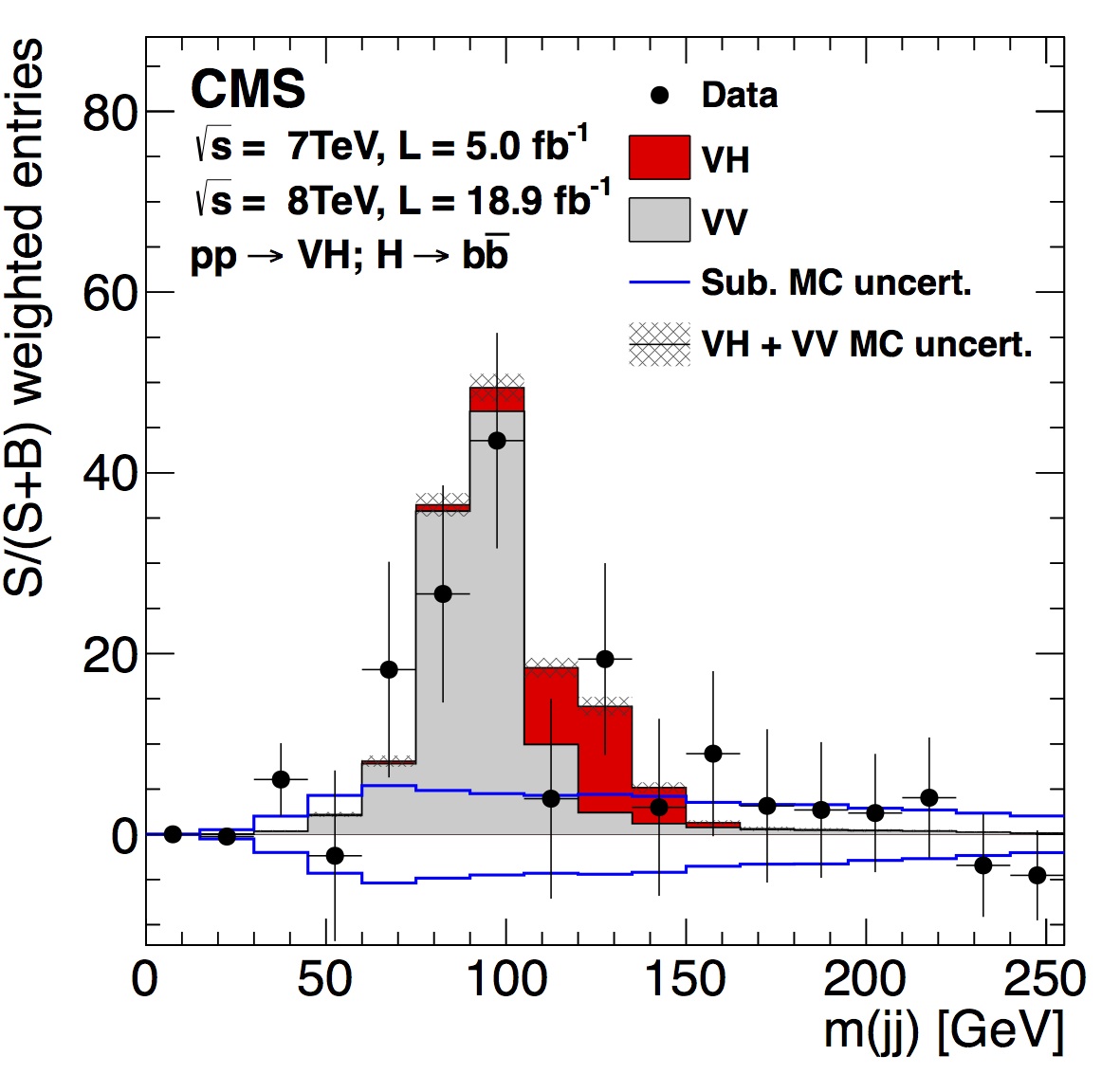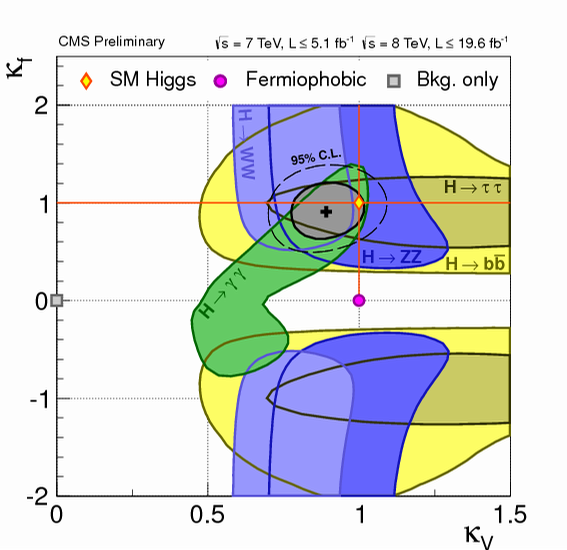Higgs boson
One of the most important missing pieces of the standard model is the experimental proof of the existence of the so-called Higgs boson. This particle has been first predicted by Peter Higgs about 50 years ago in the process of explaining the electroweak symmetry breaking mechanism, and consequently explain how particles acquire mass. All the colliders prior to the LHC have not been successful in finding direct evidence of this important missing piece.
LHC has in the first years of operatoin found a new particle, which so far is completely compatible with being this very "standard model Higgs". However, the presently available statistics do not allow a complete determination of the various couplings and decay branching ratios yet, which are essential to identify the new particle as the Higgs boson.
Higgs boson production and decays at the LHC
The Higgs boson can be produced at the LHC in different ways. Each production mode can be identified in the detector by the different signature that particles leave interacting with the detector. Different production mode has different cross section. The gluon fusion process (a) has the largest cross section at the LHC. When the Higgs boson is produced though this mechanism there are no additional particles expected in the event but the Higgs boson decay products. The second largest Higgs boson production cross section at LHC is the vector boson fusion (b). This production mechanism predicts two energetic jets to appear in the forward regions of the detector in addition to the Higgs boson decay products. The next production mechanisms are the associated production with an electroweak vector boson W or Z (c). Events of this kind contain the decay of the electroweak vector boson and the decay of the Higgs boson.
The Standard Model Higgs boson does not interact directly with the detector because of its short average lifetime. Instead it decays into several elementary particles, with a rate which is related to its mass and the mass of the decay products. A Higgs boson with a mass close to 125 GeV the largest decay rate is into a b-quark pair.
The rate which the Higgs boson is expected to be appear in CMS is proportional to the product of the cross section and the branching ratio. Possible combination of production mechanism and decay products are investigated in CMS. Larger is the number of expected signal events and larger is the sensitivity of the analysis which study a particular channel.
Higgs boson search in our group
Since 2010, our group has been involved in the Higgs boson search, when the Higgs is produced in association with a electro weak vector boson and it decays into bottom quarks. Two papers have been accepted and published in important international journals such as Phys.Lett.B. external page Search for the standard model Higgs boson decaying to bottom quarks in pp collisions at √s=7 TeV", journal where the Higgs boson first observation has been published: external page Observation of a new boson at a mass of 125 GeV with the CMS experiment at the LHC".
The results of our Run-1 analysis which uses the full dataset collected by CMS at 7 and 8 TeV have been published by Phys. Rev. D. In this first H-->bb analysis an excess of events compared to the background only expectation is observed with a local significance of 2.1 sigma. After the long shutdown, LHC delivered luminosity at 13 TeV centre-of-mass energy. The combined analysis of the 2016 data and the Run-1 data yielded an excess of events observed at a mass of 125 GeV with a significance of 4.8 standard deviations. And, combined with searches by the CMS experiment for H → b¯b in other production processes yields an observed (expected) significance of 5.6 (5.5) standard deviations and a signal strength of 1.04 +/- 0.20. It was published in 2018 in Phys.Rev.Lett. 121 (2018) no.12, 121801.
Combination of all CMS Higgs search analyses
All CMS Higgs boson results can combined in order to create an overall picture of the properties of the discovered boson. The final goal is to use all possible information to characterise the nature and the properties of the boson and possibly to look for deviation from the Standard Model predictions.
The combination of so many analysis channels needs a careful statistical analysis. The correlations between channels is properly taken into account. At the moment not all the results are yet ready for publication, therefore the Higgs properties have been measured using part of the available knowledge. The final results, combination of all relevant analyses which use the dataset collected before the LHC technical stop has been published in 2016 on the Journal of High Energy Physics (external page paper). In the paper three main properties are studied: the spin-charge parity, the mass and the couplings with fermions and bosons. The mass measurement come mainly from the so called high-resolution analyses, where the Higgs boson decays into photons and when it decays into two Z boson, with the boson decaying into electrons or muons. The mass of the Higgs boson is measured to be 125.7 +- 0.3(stat) +-0.3(syst) GeV. The combined signal strength yield relative to the Standard Model prediction is measured to be 1.09 ± 0.11. The spin measurement is driven by the H->ZZ analysis and by the H->WW where the two W decay leptonically. The CMS data favour the Standard Model hypothesis of a scalar Higgs boson (0+). All Higgs boson analyses are employed to measure the Higgs boson coupling with boson(Kv) and fermions (Kf). A summary of the coupling measurement compared to the Standard Model excitation can be seen in the figure below. CMS results are compatible with the Standard Model coupling within one sigma. Combined results on full Run 2 LHC data are expected to be published by the CMS collaboration shortly.
All measurement done so far of the discovered boson are compatible with the Standard Model Higgs boson, but more data are needed to exclude possible alternative models.
Results
Results on the Higgs boson search in its decay into bottom quarks with CMS using LHC Run 1 and Run 2 datasets.
- external page Search for Higgs Boson in VH Production with H to bb ( Lepton Photon 2011 )
- external page Search for Higgs Boson in VH Production with H to bb ( CERN seminar 2011 )
- external page Search for the standard model Higgs boson produced in association with W or Z bosons, and decaying to bottom quarks for ICHEP 2012
- external page Search for the standard model Higgs boson produced in association with W or Z bosons, and decaying to bottom quarks for HCP 2012
- external page Evidence for the Higgs boson decay to a bottom quark-antiquark pair
- external page Observation of Higgs boson decay to bottom quarks




